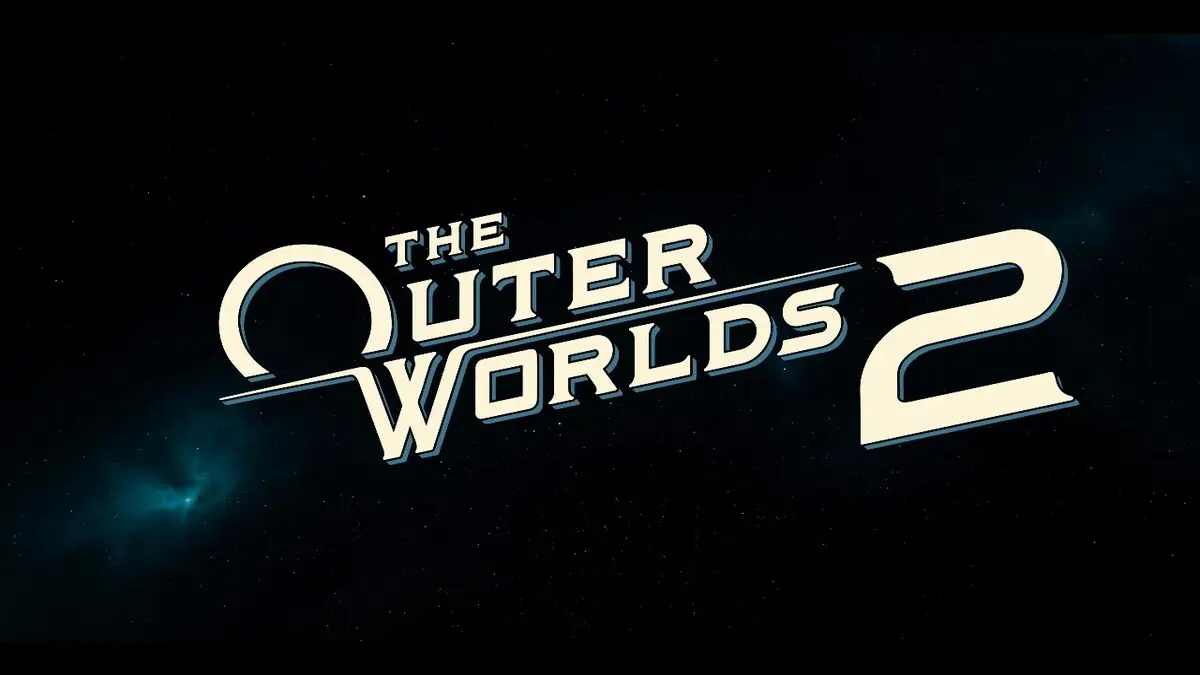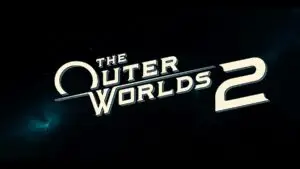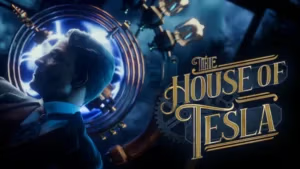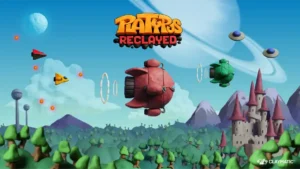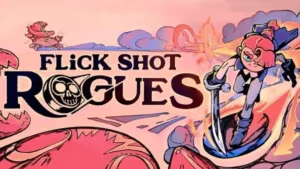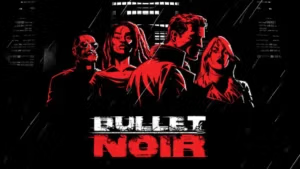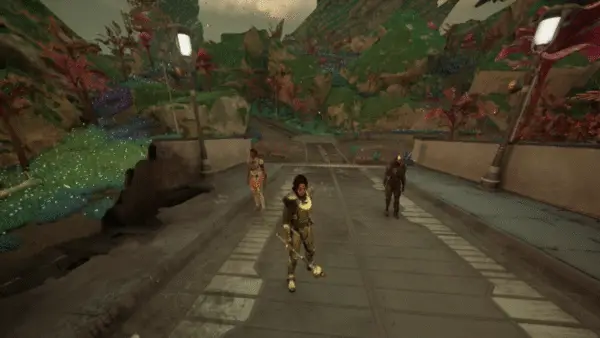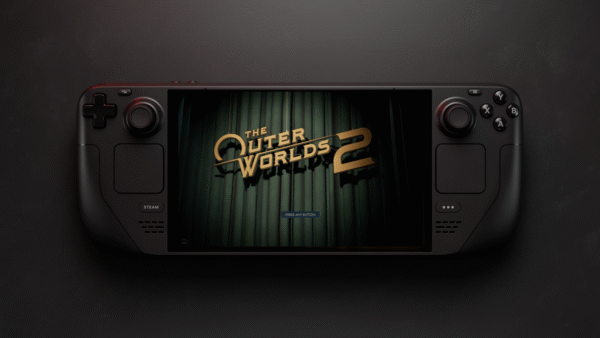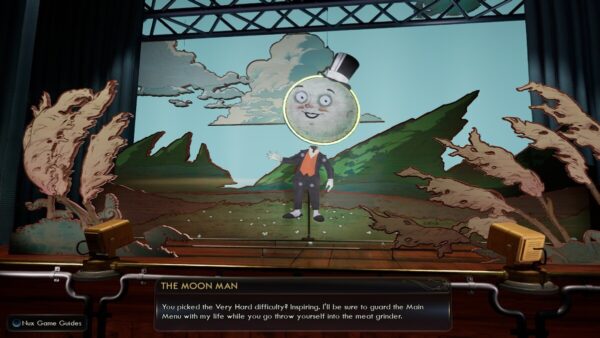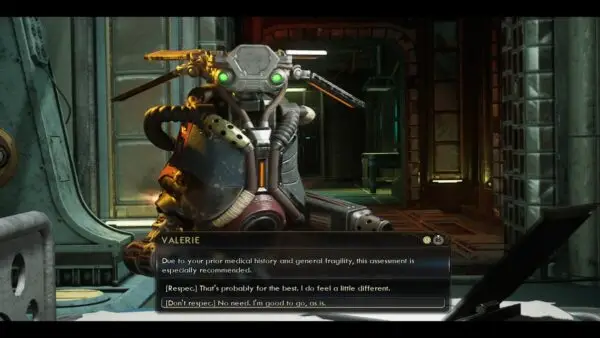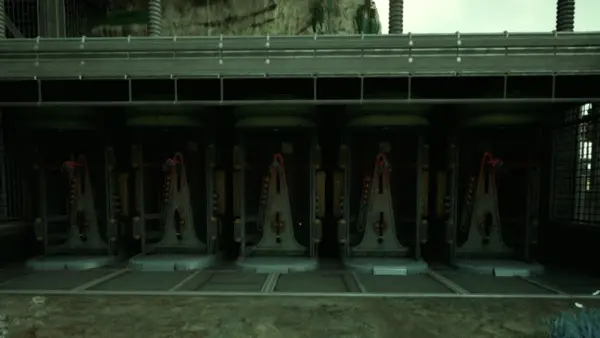In this The Outer Worlds 2 review, I can confidently say the game doesn’t try to reinvent the space RPG genre. Instead, it expands on what made the first game a cult favorite: branching choices, dark comedy, and chaotic freedom in a corporate-run galaxy. After over 40 hours sneaking, looting, and slicing my way through enemy patrols, mainly on the OLED Steam Deck, I found this sequel sticks to its roots while refining the formula in all the right places.
That journey starts with how you shape your character, and it’s where The Outer Worlds 2 first flexes its strength by giving you the tools to play your way.
Character Builds & Customization
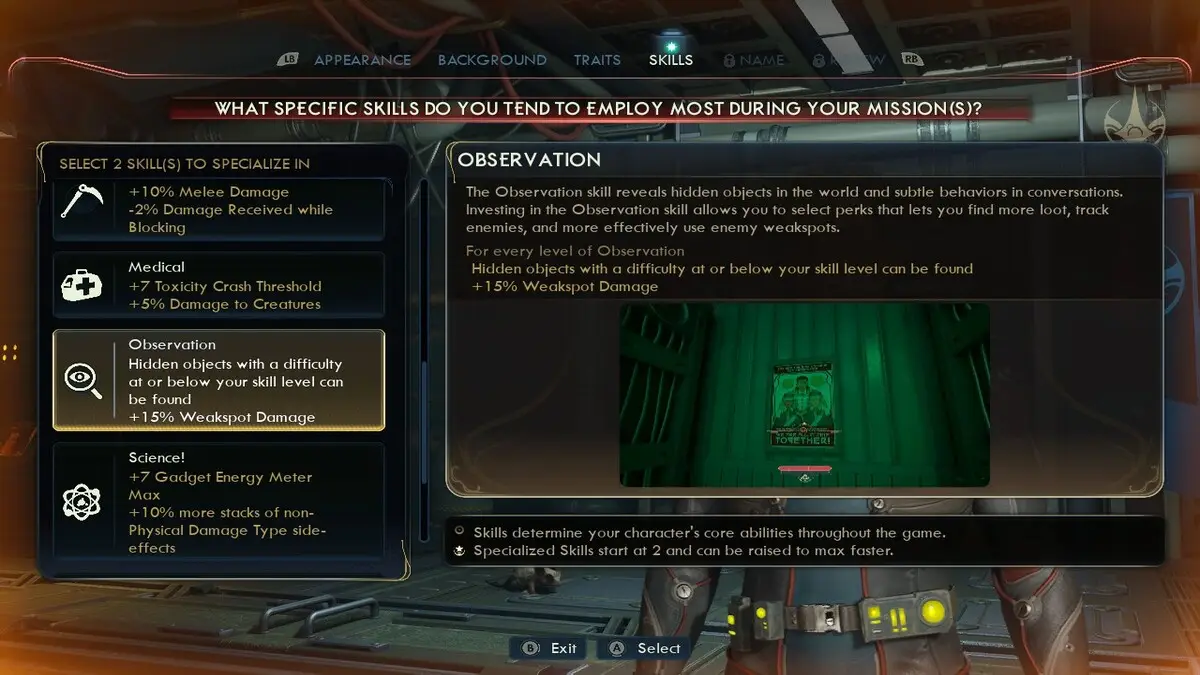
I went all-in on a stealth melee build. Sneak attacks, pickpocketing, and fast kills were my bread and butter. What’s great about The Outer Worlds 2 is how well these systems sync. I’d sneak into enemy territory, loot high-tier gear without detection, then silently dispatch enemies with one-shot critical strikes. The synergy between stealth, pickpocket, and melee perks makes it one of the most rewarding ways to play.
That said, hyper-specialization came with trade-offs. I skipped out on other skills and perks, which meant I occasionally missed alternate solutions to quests or unique interactions. It created moments of FOMO, but the game usually provides multiple alternatives to keep you engaged regardless of your path. Traits like Brainiac let you expand your role slightly, granting an extra primary trait and additional leveling opportunities that help offset some of the rigidity.
For players who enjoy experimenting, there’s solid replayability here. With multiple viable builds, build synergies, and decision-based consequences, future runs can feel radically different depending on how you spec and what kind of character you want to be.
The way you build your character also deeply influences how you navigate the game’s branching narrative paths and moral dilemmas.
Story & Choices
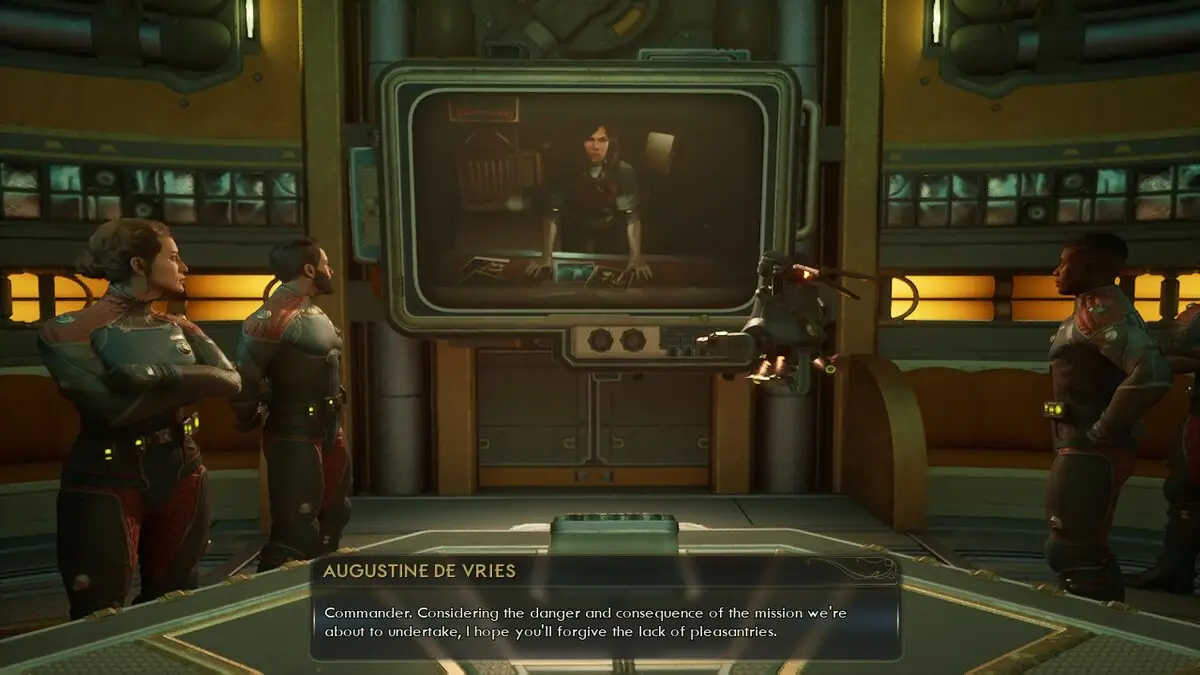
The core story starts predictably. A trusted ally betrays you, and the game sends you on a galaxy-spanning hunt for revenge. It’s not a particularly original premise, but it does its job, serving as a solid backbone for exploration and player-driven decisions. The real meat of the narrative is found in the side content, where your choices shape the world more directly.
I’ve spent dozens of hours pursuing faction stories and side quests, including one with Auntie from the Auntie’s Choice faction. She seems cheerful enough, but something about her “wholesome” branding makes my skin crawl. It’s that classic Obsidian unease just beneath the surface, and I enjoyed watching it unravel.
Key decisions throughout are marked with a “This Will Be Remembered” tag. The system carries weight, and while some payoffs take time to surface, the consequences behind major actions add impact to how you shape the galaxy.
Much of that moral tension and personality is brought to life through your crew, who feel more reactive and essential than ever before.
Companions & Relationships
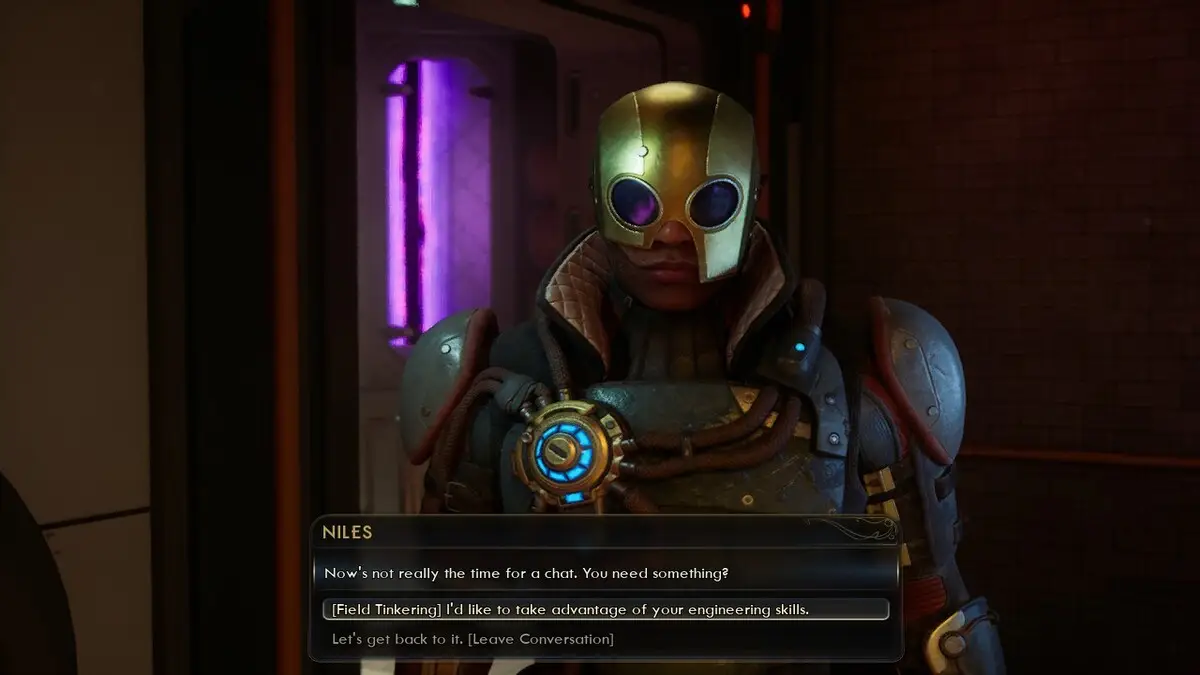
Companions are more than just extra firepower. Each has unique dialogue, combat abilities, and strengths that add depth to your strategy. I gravitated toward Aza, who matched my assassin energy perfectly. She’s brutal, funny, and wildly entertaining in both dialogue and combat. Her presence felt like an extension of my build.
I often swapped companions based on the types of enemies I was up against. Elemental resistances force you to think about who you bring into battle. Need more healing? Swap in a medic-type. Facing shock-resistant foes? Bring someone with corrosive damage. It made every mission feel more tactical and gave each companion a purpose beyond personality.
With the loyalty system, companions react meaningfully to your choices and environments. Their banter and battle presence add flavor to every situation.
Once combat kicks off, these crew dynamics shine, and so do the brutal consequences of a poorly planned approach.
Combat & Gameplay
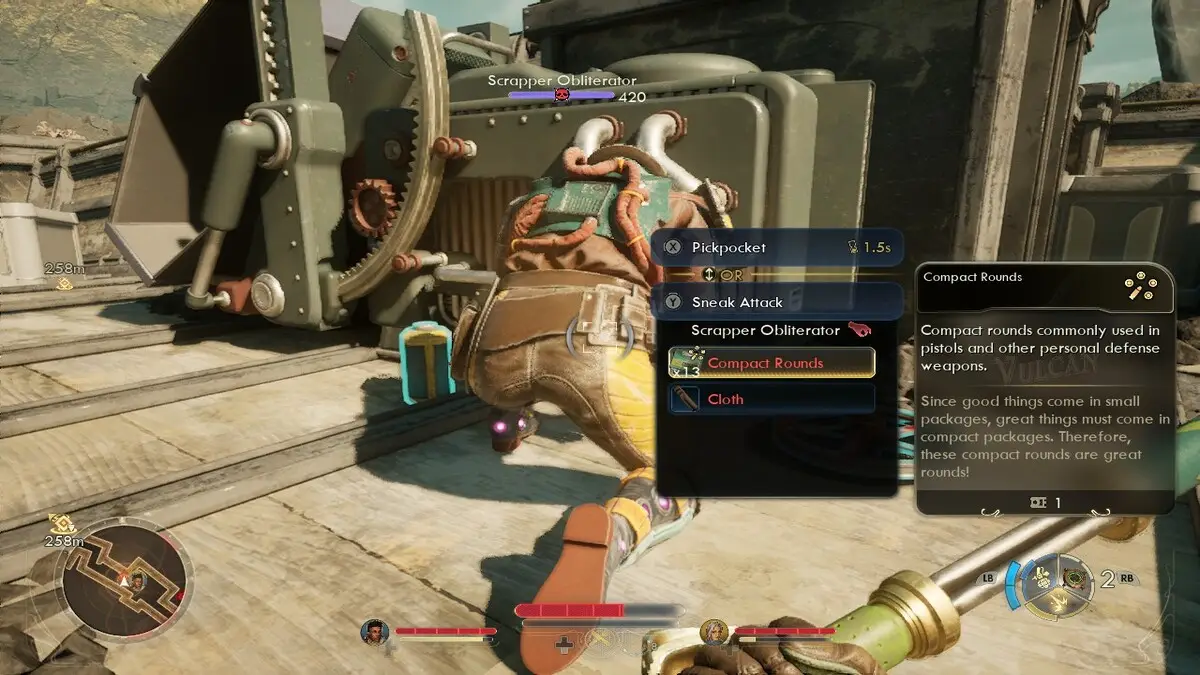
Combat hits harder in The Outer Worlds 2, especially on Very Hard mode. My stealth build was lethal but fragile. A single mistake often meant getting one-shot, even by basic enemies. When everything clicked, it was incredibly satisfying—sneaking through air vents, delivering crit-heavy takedowns, and disappearing before alarms could trigger. However, the margin for error was razor-thin.
One of the most memorable fights was at the Vox Relay Station. I had to kite the boss into the environment, trap him on terrain, and spam grenades and companion abilities to chip him down slowly. It felt like an old-school workaround, but oddly rewarding.
While stealth is powerful, it’s not overpowered. The AI can be exploited with slow movement, but high risk remains constant, keeping encounters tense.
Your combat effectiveness is heavily influenced by what the loot and crafting systems let you do, which is where the game feels more restrictive.
Crafting & Loot
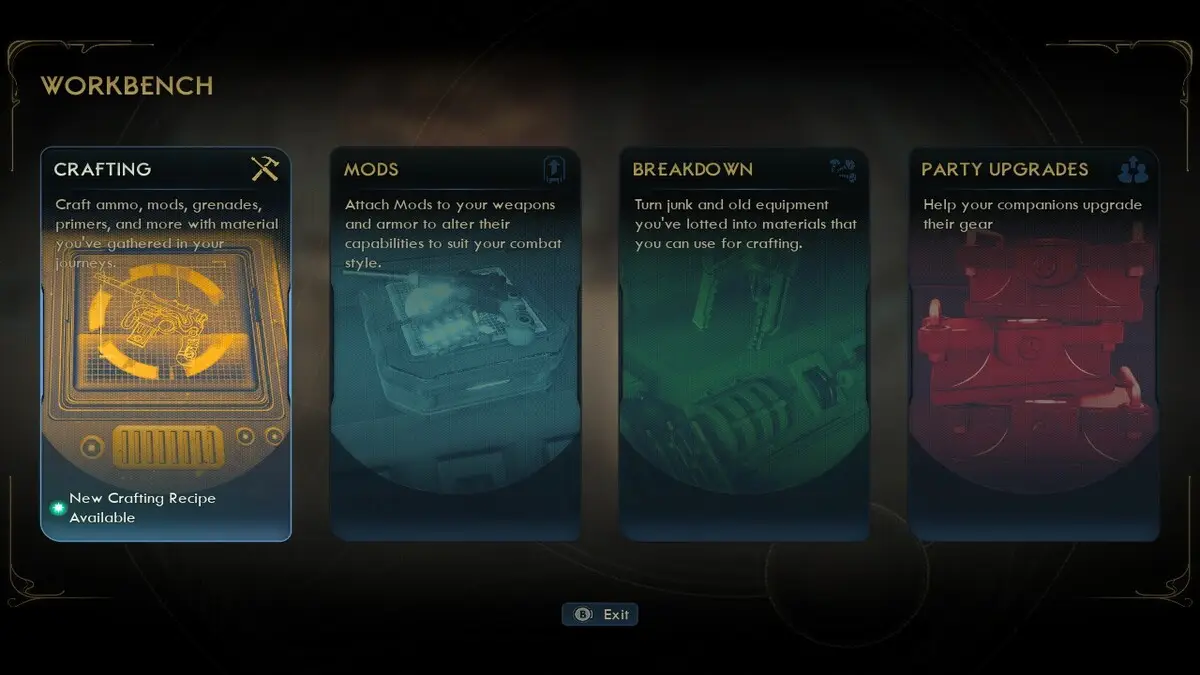
Crafting is one of the weakest systems in the game. During my review of The Outer Worlds 2, I found that you can’t forge weapons or armor from scratch, only mod existing gear. In my no-currency run, I was constantly buried in ranged weapons and tanky armor that didn’t fit my stealth-focused build. Since I was getting one-shot anyway, I leaned fully into damage. I focused on armor and mods that boosted critical strike chance and sneak attack bonuses, prioritizing lethality over defense.
Eventually, I dialed in a viable combo: high-crit melee weapons, fast movement, and damage-stacking armor. But for the first 30 hours, melee weapon variety was sparse. The lack of deeper crafting meant I couldn’t tailor my gear beyond basic tweaks.
Still, where systems faltered, the world pulled me back in thanks to some of the most inventive and bizarre quests in the series.
Side Quests & Humor
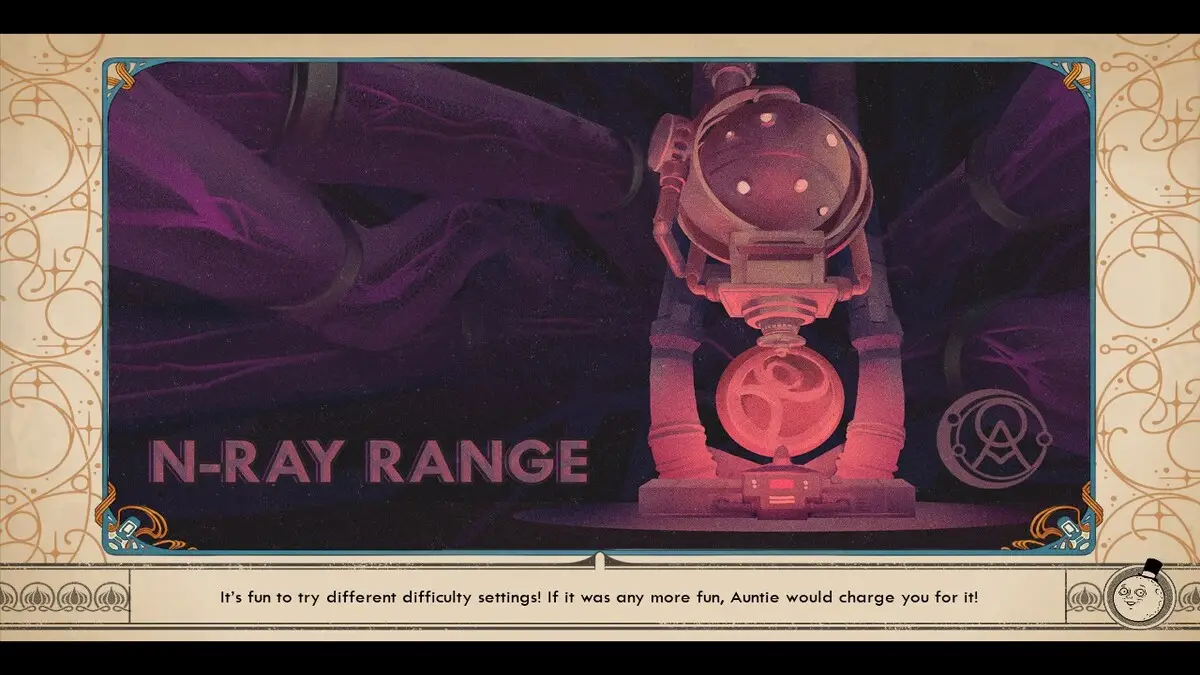
Obsidian’s signature dark humor is alive and well. One standout companion quest, “Dawn of a Glorious Betrayal,” had me using an N-Ray Scanner to reveal invisible enemies and reroute power through hidden wires in the walls. It was a refreshing shift from the standard sneak-and-kill rhythm and showed how creatively the game can remix its mechanics.
The writing embraces absurdity without losing tension. For example, when you unlock the double jump ability, it’s because someone else failed horribly trying to use it. It’s both tragic and hilarious, and entirely in line with the brand. These moments give The Outer Worlds 2 its identity and elevate it above your average space RPG.
Beyond the laughs and questlines, there’s also plenty to discover for completionists and explorers.
Collectibles & Exploration Rewards
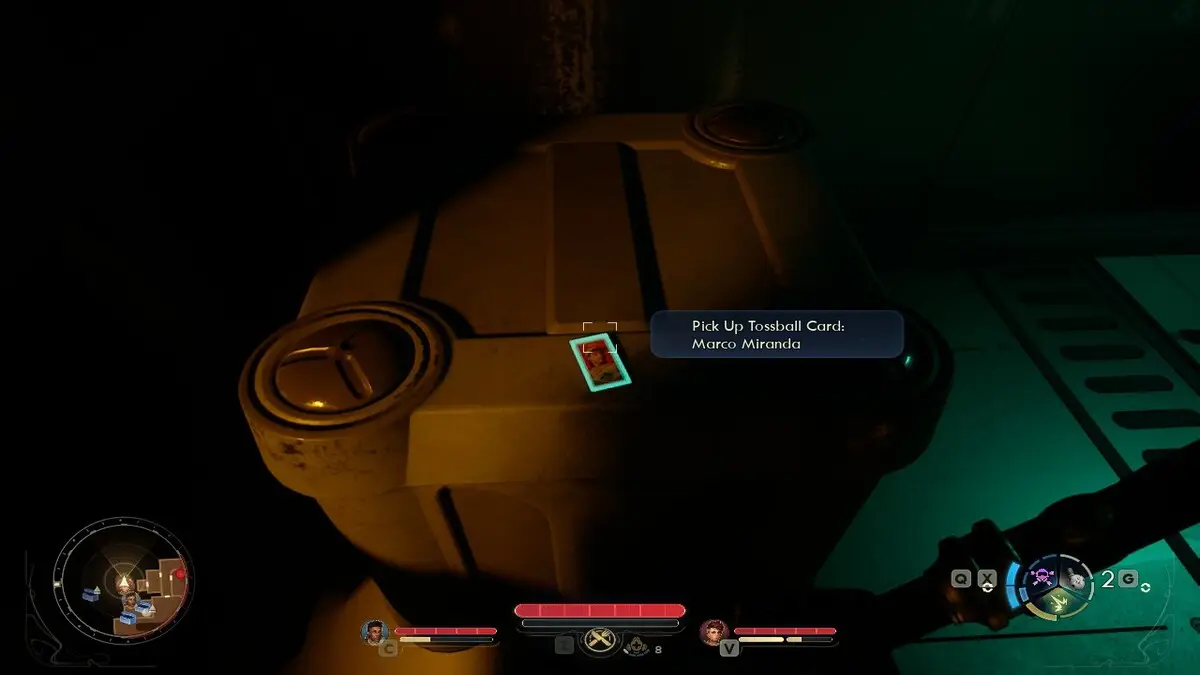
If you’re the type of player who loves hunting down hidden loot and off-path secrets, The Outer Worlds 2 delivers with a wide range of collectibles. Scattered across the galaxy are 100 collectible Tossball Cards, each offering small passive bonuses similar to Fallout’s bobbleheads. Some enhance combat stats or exploration perks, making them more than just decorative trinkets.
You’ll also find audio logs, trophies, and ship pets, which help personalize your journey and bring a bit of life to your otherwise sterile ship quarters. Whether it’s a weird alien plush or a mounted corporate achievement, these items give your hub some personality and reflect the chaos of your choices and exploration.
While not essential for progression, these collectibles are a great incentive for curious players and completionists. They’re a fun side goal that complements the main quests and adds depth to the world without feeling like filler.
Combined with the game’s distinctive visuals and audio design, these collectibles help make the galaxy feel personal and lived-in.
Sights and Sounds
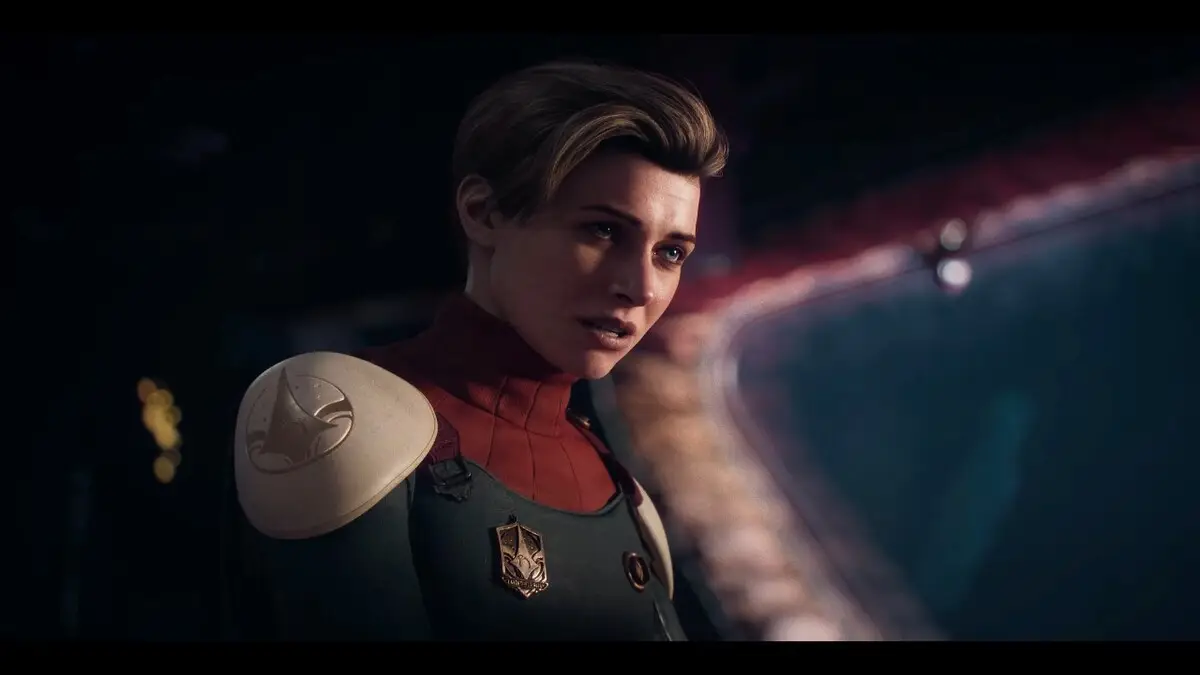
The Outer Worlds 2 impresses with its detailed character models, striking lighting, and clean sci-fi aesthetic. On the Steam Deck OLED, even cinematic close-ups look sharp and expressive, as seen in the scene above, captured directly from my handheld device. It’s a testament to how well the visuals hold up, even during story-heavy moments.
The audio is just as polished. Weapons have a satisfying impact, enemies provide helpful cues, and the ambient soundtrack supports exploration without overpowering it. Combat music kicks in at the right moments, while faction hubs and planetary transitions feature moody, atmospheric tracks.
Voice acting remains a major highlight. From Aza’s ruthless sarcasm to corporate overlords pitching dubious products, every line is delivered with style. Even minor quest NPCs feel memorable thanks to strong performances and tight writing.
If you’re playing on Steam Deck, you’ll be pleased to know this audiovisual experience doesn’t come at the cost of performance.
Steam Deck Performance
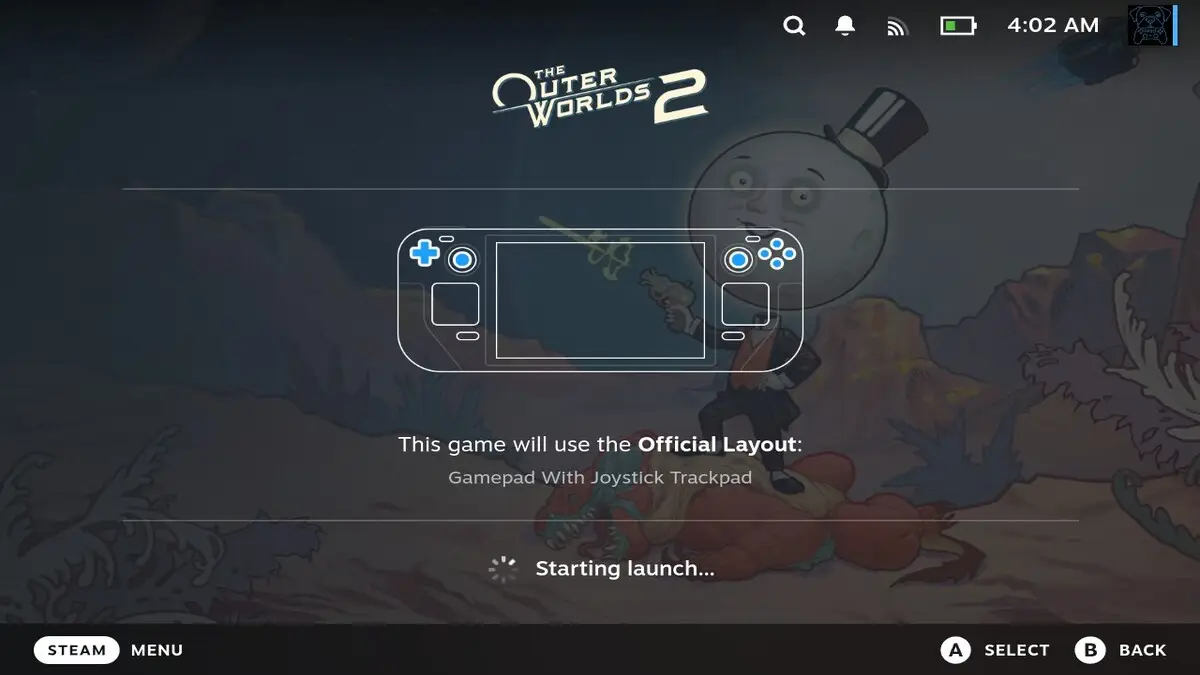
My total playtime during the review of The Outer Worlds 2 on my Steam Deck OLED was surprisingly good, and the game ran smoothly. After adjusting the resolution to match the display and tweaking the upscaling settings, I was able to maintain consistent frame rates during combat, exploration, and cutscenes while playing on the Very High graphics setting. The visuals stayed sharp, controls mapped perfectly, and I never felt like I was missing anything by going handheld.
Battery life was solid—several hours per session—without sacrificing fidelity. For RPG fans who love playing on the go, this The Outer Worlds 2 review confirms it’s easily one of the better Steam Deck experiences available this year.
Final Verdict – Is The Outer Worlds 2 Worth Playing?

This The Outer Worlds 2 review makes one thing clear: the game is a confident, character-driven sequel that refines the formula instead of reinventing it. Its build variety, reactive world, companion depth, and memorable quests provide hours of chaotic fun. While its crafting system is underwhelming and the story structure plays it safe, nearly every other element delivers. Whether you’re roleplaying a stealth assassin or a grenade-hurling lunatic, the game supports creativity and expression with a universe that responds to your choices.
New players will find it accessible without handholding, and returning fans will appreciate how much more polished and flexible this sequel feels. If you’re looking for a spacefaring RPG that rewards experimentation, embraces dark humor, and plays great on Steam Deck, The Outer Worlds 2 earns its spot in your library.

